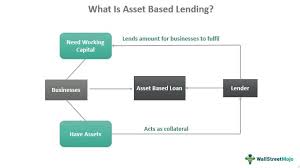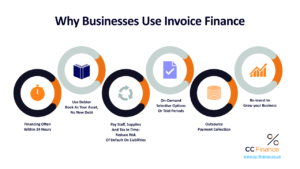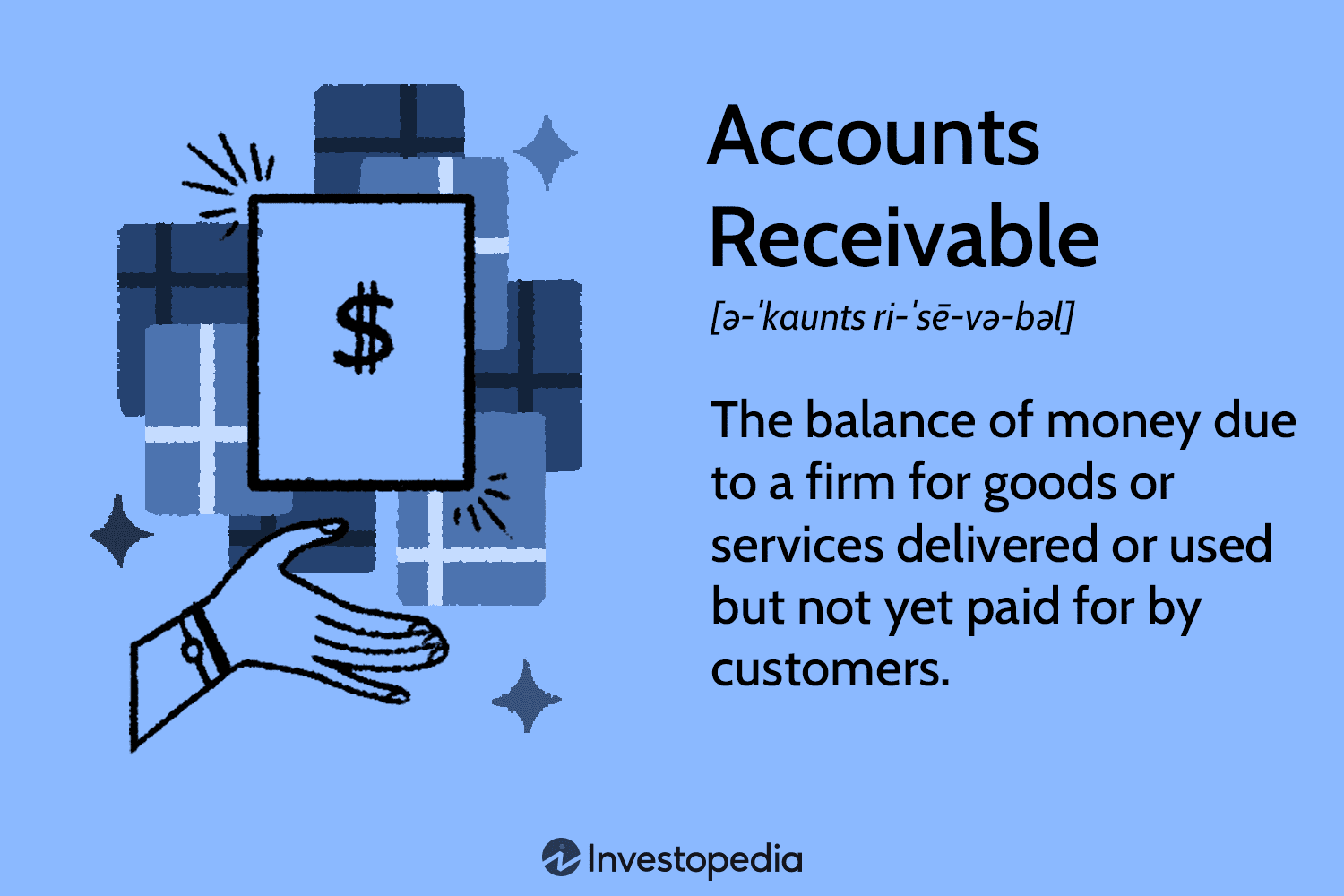Accounts receivable financing, also known as invoice financing or factoring, is a type of short-term financing that allows businesses to access immediate cash by leveraging their outstanding invoices. This financing option is particularly useful for companies experiencing cash flow gaps due to slow-paying customers or lengthy payment terms.
According to Taulia,https://taulia.com/glossary/what-is-accounts-receivable-ar-financing/
In this article, we will delve into the world of accounts receivable financing, exploring its benefits, types, and how it works. We will also discuss the advantages and disadvantages of this financing option, as well as provide examples of industries and businesses that can benefit from accounts receivable financing.
How Accounts Receivable Financing Works
Accounts receivable financing involves selling outstanding invoices to a third-party financing company, known as a factor or financing institution. The factor advances a percentage of the invoice amount to the business, typically within 24-48 hours. The business can then use this cash to meet its financial obligations, invest in growth initiatives, or cover operational expenses.
Once the factor has advanced the funds, they will typically take on the responsibility of collecting payment from the customer. The factor will then deduct their fees from the payment received and return the remaining balance to the business.
Benefits of Accounts Receivable Financing
Accounts receivable financing, also known as invoice financing or factoring, offers numerous benefits to businesses. Here are some of the most significant advantages of accounts receivable financing:
Improved Cash Flow
- Immediate Access to Cash*: Accounts receivable financing provides businesses with immediate access to cash, which can be used to meet financial obligations, invest in growth initiatives, or cover operational expenses.
- Reduced Cash Flow Gaps*: By leveraging outstanding invoices, businesses can reduce cash flow gaps caused by slow-paying customers or lengthy payment terms.
Increased Financial Flexibility
- Flexibility to Take on New Projects*: outstanding invoice financing provides businesses with the financial flexibility to take on new projects, invest in growth initiatives, or expand their operations.
- Ability to Meet Unexpected Expenses*: By having access to immediate cash, businesses can meet unexpected expenses, such as equipment repairs or unexpected increases in raw materials costs.
Reduced Risk
- Reduced Bad Debt Risk*: outstanding invoice financing reduces the risk of bad debt, as the financing company assumes the risk of non-payment.
- Reduced Credit Risk*: By outsourcing invoice collection to a financing company, businesses can reduce their credit risk and avoid the costs associated with chasing late payments.
Simplified Accounting and Administration
- Simplified Accounting Processes*: outstanding invoice financing simplifies accounting processes, as the financing company handles invoice collection and payment processing.
- Reduced Administrative Burden*: By outsourcing invoice collection and payment processing, businesses can reduce their administrative burden and focus on core business activities.
Improved Relationships with Suppliers and Customers
- Improved Relationships with Suppliers*: outstanding invoice financing can improve relationships with suppliers, as businesses can pay their suppliers on time and maintain a good credit history.
- *Improved Relationships with Customers*: By having access to immediate cash, businesses can offer their customers better payment terms, improving customer relationships and increasing customer loyalty.
Competitive Advantage
- *Competitive Advantage*: outstanding invoice financing can provide businesses with a competitive advantage, as they can offer better payment terms, invest in growth initiatives, and expand their operations.
- *Increased Market Share*: By having access to immediate cash, businesses can increase their market share, expand their customer base, and improve their revenue growth.
Tax Benefits
- Tax Deductibility*: The fees associated with accounts receivable financing may be tax-deductible, reducing the business’s tax liability.
- Reduced Tax Burden*: By having access to immediate cash, businesses can reduce their tax burden, as they can pay their taxes on time and avoid penalties and interest charges.
Other Benefits
- Improved Credit Score*: outstanding invoice financing can improve a business’s credit score, as they can pay their suppliers and creditors on time.
- Reduced Stress*: By having access to immediate cash, businesses can reduce their stress levels, as they can meet their financial obligations and focus on core business activities.
- Increased Business Value*: Accounts receivable financing can increase a business’s value, as it can improve cash flow, reduce debt, and increase profitability.
Types of Accounts Receivable Financing
- Factoring

– Definition*: Selling outstanding invoice to a third-party financing company, which collects payment from customers.
– Benefits*: Immediate access to cash, reduced administrative burden, and transferred credit risk.
– Costs*: Factoring fees, typically ranging from 1-5% of the invoice value.
- Asset-Based Lending

– Definition*: Using accounts receivable as collateral to secure a loan or line of credit.
– Benefits*: Access to a revolving line of credit, flexible repayment terms, and lower interest rates compared to factoring.
– Costs*: Interest rates, fees, and collateral requirements.
- Invoice Discounting

– Definition*: Borrowing against outstanding invoices, with the option to repay the loan when the customer pays the invoice.
– Benefits*: Quick access to cash, flexible repayment terms, and confidentiality (customers are not notified).
– Costs*: Interest rates, fees, and charges for late payment.
4. Invoice Financing

– Definition*: A type of short-term loan that uses outstanding invoices as collateral.
– Benefits*: Fast access to cash, flexible repayment terms, and the ability to maintain control over the sales ledger.
– Costs*: Interest rates, fees, and charges for late payment.
Advantages and Disadvantages of outstanding invoice Financing
Accounts receivable financing, also known as invoice financing or factoring, is a financing option that allows businesses to leverage their outstanding invoices to access immediate cash. Here are the advantages and disadvantages of accounts receivable financing:
Advantages
- Improved Cash Flow: outstanding invoices financing provides businesses with immediate access to cash, which can be used to meet financial obligations, invest in growth initiatives, or cover operational expenses.
- Reduced Cash Flow Gaps: By leveraging outstanding invoices, businesses can reduce cash flow gaps caused by slow-paying customers or lengthy payment terms.
- Increased Financial Flexibility: Accounts receivable financing provides businesses with the financial flexibility to take on new projects, invest in growth initiatives, or expand their operations.
- Reduced Bad Debt Risk: Accounts receivable financing reduces the risk of bad debt, as the financing company assumes the risk of non-payment.
- Simplified Accounting and Administration: Accounts receivable financing simplifies accounting processes, as the financing company handles invoice collection and payment processing.
- Improved Relationships with Suppliers and Customers: Accounts receivable financing can improve relationships with suppliers and customers, as businesses can pay their suppliers on time and offer their customers better payment terms.
- Competitive Advantage: Accounts receivable financing can provide businesses with a competitive advantage, as they can offer better payment terms, invest in growth initiatives, and expand their operations.
ALSO READ:Best Home Insurance Companies in Massachusetts:
Disadvantages
- Fees and Interest Charges*: outstanding invoice financing involves fees and interest charges, which can be high and eat into profit margins.
- Loss of Control*: By outsourcing invoice collection and payment processing, businesses may lose control over these critical functions.
- Potential Damage to Customer Relationships*: If not managed properly, accounts receivable financing can damage customer relationships, as customers may be contacted by the capital company for payment.
- Dependence on Financing Company*: Businesses may become dependent on the financing company for cash flow, which can create a vulnerable financial position.
- Risk of Non-Renewal*: Financing companies may not renew financing agreements, which can leave businesses without access to critical funding.
- Reputation Risk*: Businesses may be perceived as financially unstable if they rely heavily on accounts receivable financing.
- Complexity*: Accounts receivable financing agreements can be complex, with multiple parties involved, which can create administrative burdens.
Mitigating the Disadvantages
To mitigate the disadvantages of accounts receivable financing, businesses should:
- Carefully review financing agreements*: Understand the terms, fees, and interest charges involved.
- Choose a reputable financing company*: Research the financing company’s reputation, experience, and customer service.
- Maintain control over customer relationships*: Ensure that the financing company does not damage customer relationships.
- Diversify funding sources*: Do not rely solely on accounts receivable financing for cash flow.
- Monitor and adjust*: Regularly review and adjust the financing agreement as needed to ensure it remains beneficial to the business.
Industries and Businesses That Can Benefit from Accounts Receivable Financing
Outstanding invoices financing can be beneficial for various industries and businesses, including:
- Construction: Construction companies often experience cash flow gaps due to lengthy payment terms. Accounts receivable financing can help these businesses access immediate cash to cover operational expenses.
- Manufacturing: Manufacturers often have to wait 30-60 days for payment from customers. Accounts receivable financing can help these businesses improve their cash flow and invest in growth initiatives.
- Transportation: Transportation companies, such as trucking and logistics providers, often experience cash flow gaps due to slow-paying customers. Accounts receivable financing can help these businesses access immediate cash to cover operational expenses.
- Staffing Agencies: Staffing agencies often have to wait for payment from customers, which can lead to cash flow gaps. Accounts receivable financing can help these businesses improve their cash flow and invest in growth initiatives.
Conclusion
Accounts receivable financing is a valuable capital option for businesses experiencing cash flow gaps due to slow-paying customers or lengthy payment terms.




